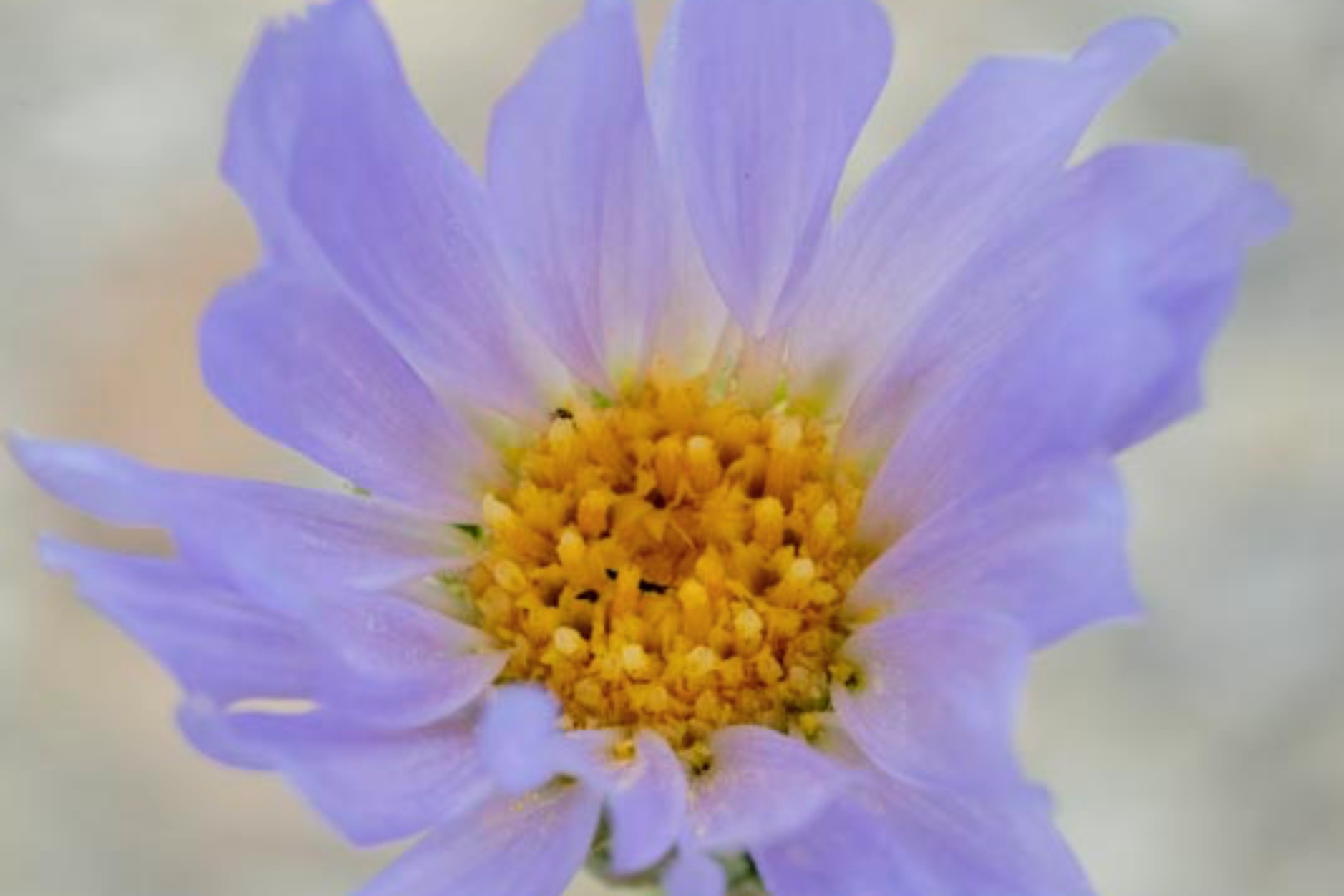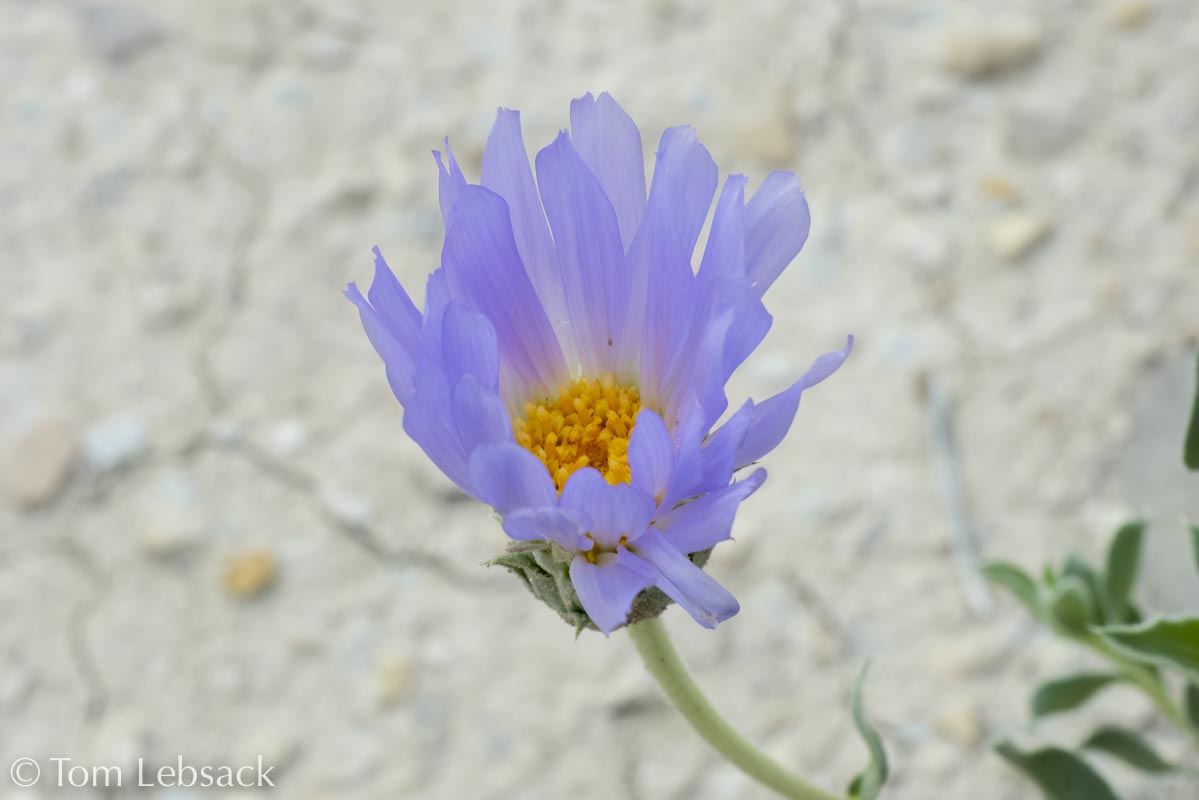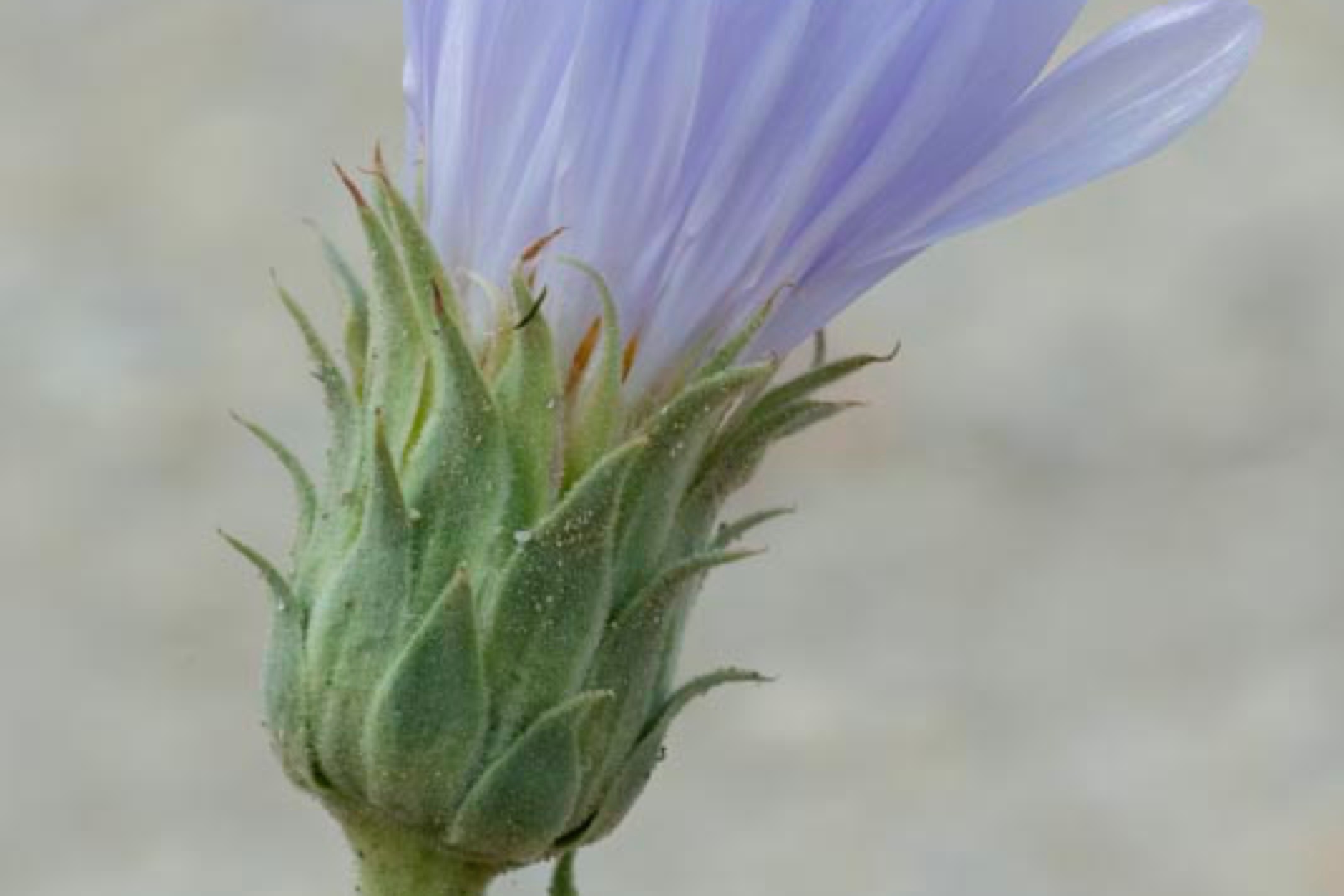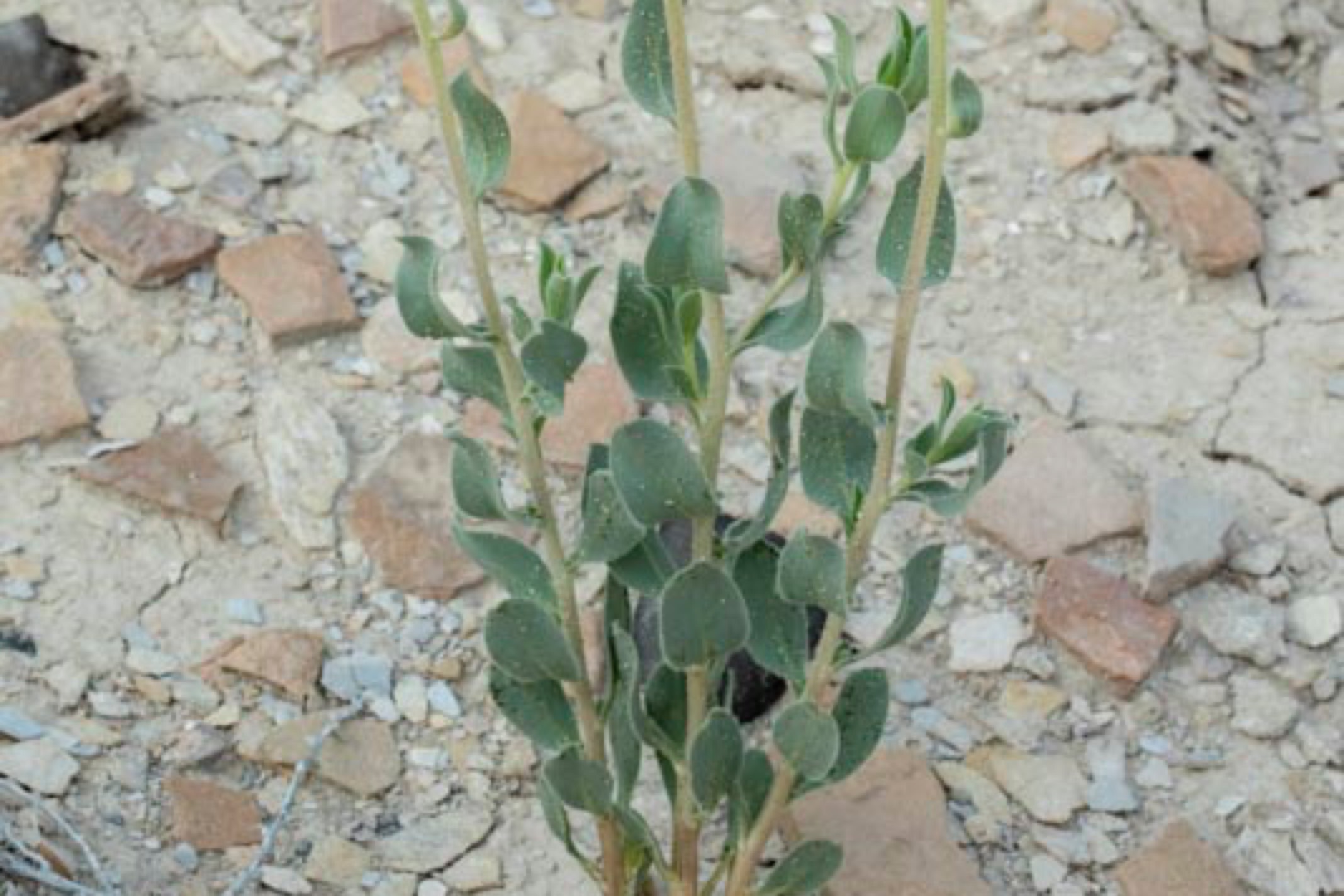Texas Wildbuds
Xylorhiza wrightii
(Terlingua Aster)
| Scientific Name | Xylorhiza wrightii (Machaeranthera wrightii) | USDA PLANTS Symbol | XYWR |
| Common Name | Terlingua Aster, Big Bend Woodyaster | ITIS Taxonomic Serial No. | 38702 |
| Family | Asteraceae (Sunflower) | Flora of North America Ref. | Click Here |
| Description | Habitat: Desert environment; rocky-clay soil, alkaline, gypsum or limestone flats, shaly slopes, rocky hills, barren areas. Plant: Upright perennial, 4 to 16 inches tall; branched in lower portion; stems densely covered by small, forked, glandular hairs. Leaves: Alternate, stalkless, spatulate to obovate or oblong blades 3/4 to 2 inches long and up to 3/4-inch wide; margins nearly entire or with a few teeth; upper surface with short, glandular hairs; fewer and smaller upper leaves. Inflorescence: Solitary flower heads up to 2-1/2 inches across and 1-1/2-inches long on peduncles up to 4 inches long; narrow, somewhat recurved, pointed phyllaries with sticky hairs; 16 to 40 pink to bluish-violet rays and many yellow disk florets. Bloom Period: March to May. References: "Manual of the Vascular Plants of Texas" by Correll and Johnston, "Wildflowers of Texas" by Geyata Ajilvsgi, Flora of North America and American Southwest. Notes: Somewhat rare; endemic to just a few counties in Far West Texas. |
BONAP Distribution Map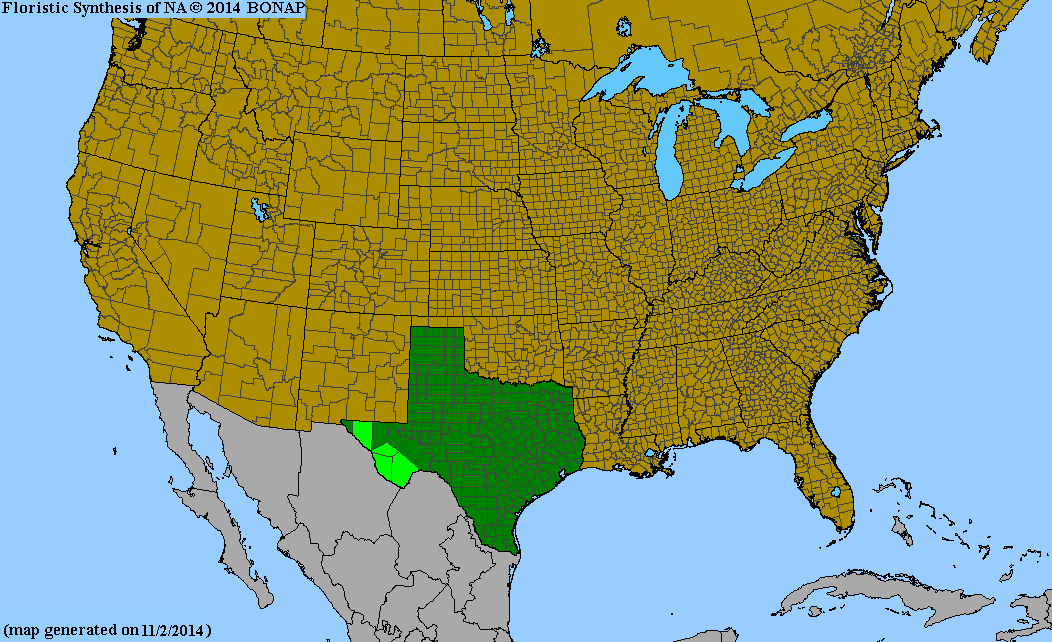 Map Color Key Map Color Key |
Texas Status: Native |
Banner photo of Castilleja indivisa and Lupinus ssp. taken along FM 1323 north of Johnson City, Blanco County
© Tom Lebsack 2025
Every attempt is made to provide accurate, up-to-date, and relevant information, but the completeness or accuracy of any information presented on this website cannot be guaranteed. I use authoritative references to insure high standards of accuracy and review and update the information frequently.
